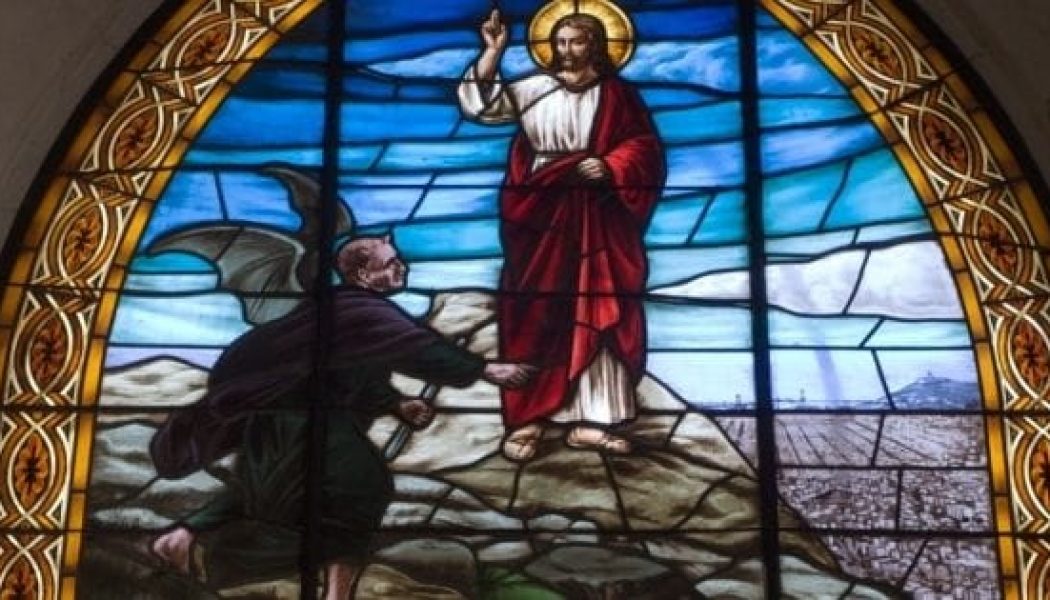
I was sitting on a ledge two hundred feet above the Judean wilderness. A lifeless and virtually unending sea of sand dunes was below me. It’s one of those visuals you never quite get your head around. A network of sandy spines reaches out to the horizon and then disappears. This is where things in this region go to die. Ironically, it’s a beautiful place. The scale alone is spectacular. And when the deep colors of the afternoon sky in Israel collide with trillions upon trillions of granules of sand it’s a breathtaking masterpiece.
I was here reconnoitering for my local church. A trip to Israel was in the works. This was my first time in the Holy Land. By the time we arrived at this particular spot I’d been traveling for five days. Several of the places we stopped offered an opportunity for reflection and teaching. This qualified as one of those places. We were herded out of our bus and up a slight hill. Once we reached the crest the world fell out below us into the desert. The group found spots here and there and sat down in complete silence. It was a massive sort of natural amphitheater where the show was the deepest stillness nature has to offer.
“This is the approximate location of Jesus’ temptation.” Obviously, this fact made it all the more spectacular. Somewhere down there the Son of God battled for my soul. I kept thinking to myself, “My sin, oh the bliss of this glorious thought, my sin, not in part but the whole…” Somewhere in the midst of this devastation after forty days of fasting the Holy Son of God was led out to bear the burden of humanity and face down the same adversary who led the first Adam to cause such destruction in the first place (Hebrews 2:9).
Needless to say, my heart was tuned to worship. I was ready to see Jesus exalted. Just then the designated preacher stood to deliver the message, “Turn with me to Mathew chapter four. I would like to offer you five steps to resisting temptation in your life.” Or, something to that effect. On the inside I was devastated. “Why would you do that? Jesus is right here! Give me Christ!” On the outside there was nothing but a sacerdotal smile. In light of where I was seated, the popular church’s ability to miss the point (Jesus) was more obvious than ever. It was a very sad moment.
Normally, this would not have been so surprising, but we were standing on the spot. Typically, this is standard stuff. It’s what the contemporary church does with scenes like this. (In fact, this was how I interpreted it the first time I encountered it in the Gospel of Matthew.) Basically, we take the epic of redemption laid out before us in events like the temptation and bury it under our narcissistic need for “relevance.” We get in our own way of the glory of our own redemption. It’s maddening how ubiquitous this tendency is within evangelicalism.
Seriously. What’s the assumed application of Jesus’ temptation in the wilderness? By assumed I mean – What have we been told (over years of preaching) this event is about? Is it not usually offered as a set of “principles” on how Christians can resist temptation? Or to put that another way, it’s about us. But honestly, is this really what’s happening at this moment? Is Jesus really offering an example how we can personally resist the temptation of the devil? Is this a tutorial for daily living? Of course not! A “how to” on resisting temptation is a secondary application at best if not tertiary. He’s not telling us to do anything. He’s actually doing it for us. There is something much greater under way in this moment. More importantly, do we need to be standing within view of the actual site to realize how misguided our take on it is?
What we are witnessing here has little to do with us except as it involves Jesus’ willingness to take on the burden of humanity to save us. What we are beholding is our Lord – the second Adam – obeying where the first Adam failed to obey (Romans 5:17). We see him bowing his will to the Father’s, taking the suffering of the cross upon himself and redeem us from our bondage. Jesus isn’t offering a lesson on how to resist temptation. He is actually resisting temptation on a scale we can barely fathom.
Although Jesus’ hunger was no doubt fierce, the first temptation isn’t really about hunger per se. Nor is it about how you and I can use the Word of God to resist the devil (although we can and do.) It’s about Jesus choosing the suffering and indignity of the cross over his rightful dignity as the Son of God. “Why would the Son of God suffer under the consequences of humanity’s rebellion? Why not simply command stones to be bread and relieve the indignity? Why suffer such demeaning pain for such unworthy subjects?” It’s a valid question. The only answer to this question is grace (Titus 2:4-7).
Additionally, the second temptation has little to do with Jesus proving his sonship to Satan. Nor, is it about how we can trust God in a trial (although we can and do.) It was about the necessary obscurity of the Son of God. In obedience to the Father Jesus took on humanity and veiled his glory in order to take up the cross (Isaiah 53:2-3). Basically, “Why suffer the pain of the cross when you can reveal yourself as the Son of God in a (self-serving) display of your glory?” In this scene Jesus’ humility is beyond compare. The Son of God refused his rightful status in order to save men whose determination to exalt themselves above God had condemned them in the first place.
The third temptation cuts to the chase. There’s not much spin on this one. It is a blatant attempt to have Jesus avoid the anguish of the cross and, thereby, disobey the Father (Hebrews 12:2-3). He could be declared “Lord of Lords” without bearing God’s wrath on behalf of sinners if he merely subjected himself to Satan. In response Jesus commits to do that which humanity had failed to do in the very beginning – worship God only.
It’s a glorious scene. And one I’ve only begun to unpack here. The intent is for us to marvel at the grace of God in Christ. In a sense, we’re called to sit on a theological and biblical ledge and peer into the awe inspiring landscape of God’s grace. This is what he did for us. The point is be confident in what Christ has done for us and not to grow confident in what we can do for ourselves. In this present passage, the contradiction between the contemporary translation (us) and the actual point (Him) could not be sharper.
Why we constantly choose to focus on the former when the latter is screaming at us from the pages of the Bible is hard to explain.
Byron Yawn is the senior pastor of Community Bible Church in Nashville, Tennessee. He is the author of What Every Man Wishes His Father Had Told Him, and Suburbianity: Can We Find Our Way Back to Biblical Christianity? (Harvest House) You can follow him on Twitter @byronyawn.










